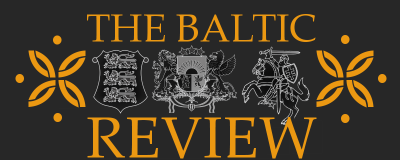Wooden name puzzles are classic toys that offer both educational and developmental benefits for children. They can be introduced at different stages, each with unique benefits based on a child’s age and developmental milestones. Here’s a breakdown of the best ages for wooden name puzzles on the website https://voopuzzle.com/ and how they benefit children at each stage:
1. Ages 1-2: Early Exploration and Motor Skills Development
Introducing a wooden name puzzle to toddlers around 12-24 months can be a great way to promote sensory play and motor skill development. At this stage:
- Purpose: Focus on grasping, manipulating, and exploring the puzzle pieces.
- Benefits: Helps improve hand-eye coordination, strengthens finger muscles, and enhances pincer grip. Additionally, recognizing shapes and colors can be fun and stimulating for a young child.
- Safety Tip: Ensure the puzzle is made of non-toxic materials and has large, smooth-edged pieces that are easy to handle and cannot be swallowed.
2. Ages 2-3: Shape Recognition and Problem-Solving Skills
Between 2 and 3 years old, children become more curious and start to engage in simple problem-solving activities. Wooden name puzzles are ideal for this age because:
- Purpose: Teach basic shape recognition as the child learns to match letters and puzzle pieces.
- Benefits: Boosts cognitive development and introduces children to the concept of letters and names. This stage helps build a foundation for letter recognition and language skills.
- Learning Focus: At this age, children might start to recognize the letters of their names, making personalized puzzles especially engaging and relevant.
3. Ages 3-4: Language and Letter Recognition
During preschool years (ages 3-4), wooden name puzzles serve as educational tools that contribute to early literacy skills. Children can begin to recognize and name letters, forming connections between visual symbols and sounds:
- Purpose: Enhance letter recognition and foster language development.
- Benefits: Helps children learn to identify the letters of their names, understand the alphabetical sequence, and strengthen their language comprehension.
- Learning Tip: Parents and educators can use this opportunity to talk about the sounds of the letters, spelling the child’s name, and introducing basic words and phonetics.
4. Ages 4-6: Pre-Reading and Spelling Skills
From 4 to 6 years old, children begin to transition into pre-reading stages. Wooden name puzzles can be used as a playful yet educational tool to reinforce these new skills:
- Purpose: Teach spelling, word formation, and early reading.
- Benefits: Promotes name spelling, word recognition, and even sight-reading. This stage is where children start associating letters with sounds and forming simple words.
- Creative Engagement: Encourage children to spell other names or words using the same puzzle pieces, making it a versatile learning toy.
5. Ages 6 and Up: Memory and Advanced Cognitive Skills
While wooden name puzzles are often seen as toys for younger children, they can still provide value to older kids as well:
- Purpose: Strengthen memory and recall.
- Benefits: Can be used for various learning activities, such as spelling practice, sequencing games, and even as decor for older kids’ rooms.
- Advanced Learning: Older children may use the puzzle to learn different languages, practice spelling variations, or even design their own puzzles.
Choosing the Right Puzzle Based on Age
- 1-2 Years: Look for simple wooden name puzzles with large pieces, minimal designs, and bold colors.
- 2-4 Years: Choose puzzles that feature chunky letters and include both uppercase and lowercase options.
- 4-6 Years: Opt for puzzles with more intricate details, colorful illustrations, or puzzles that can be used for learning different words.
- 6+ Years: Select more complex designs that can be used for spelling games, word-building activities, or as keepsakes.
Safety and Material Considerations
No matter the age, always ensure the wooden name puzzle is made from non-toxic, eco-friendly materials and has smooth, rounded edges. Avoid puzzles with small parts for younger children, and opt for high-quality craftsmanship to ensure durability.
By aligning the type of puzzle with the child’s age and developmental needs, wooden name puzzles can be a cherished and educational tool that grows with them.




























Comments